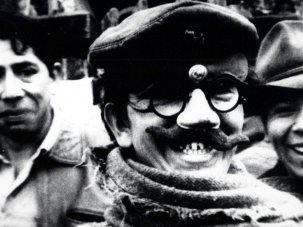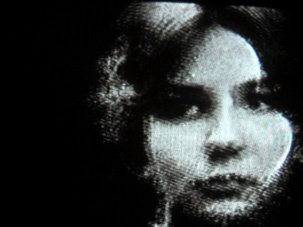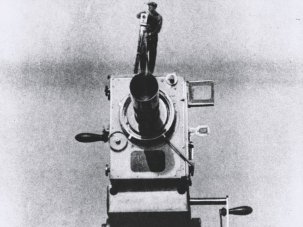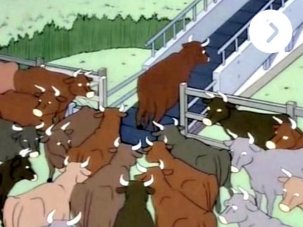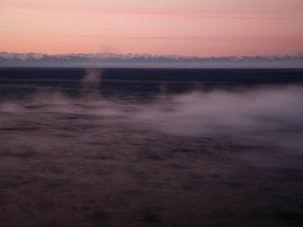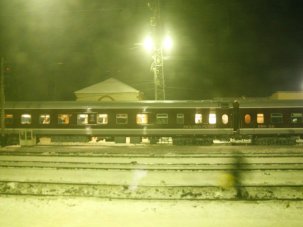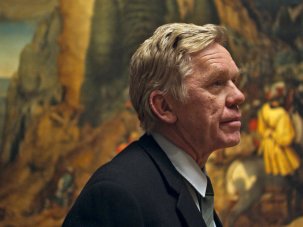from our October 2012 issue
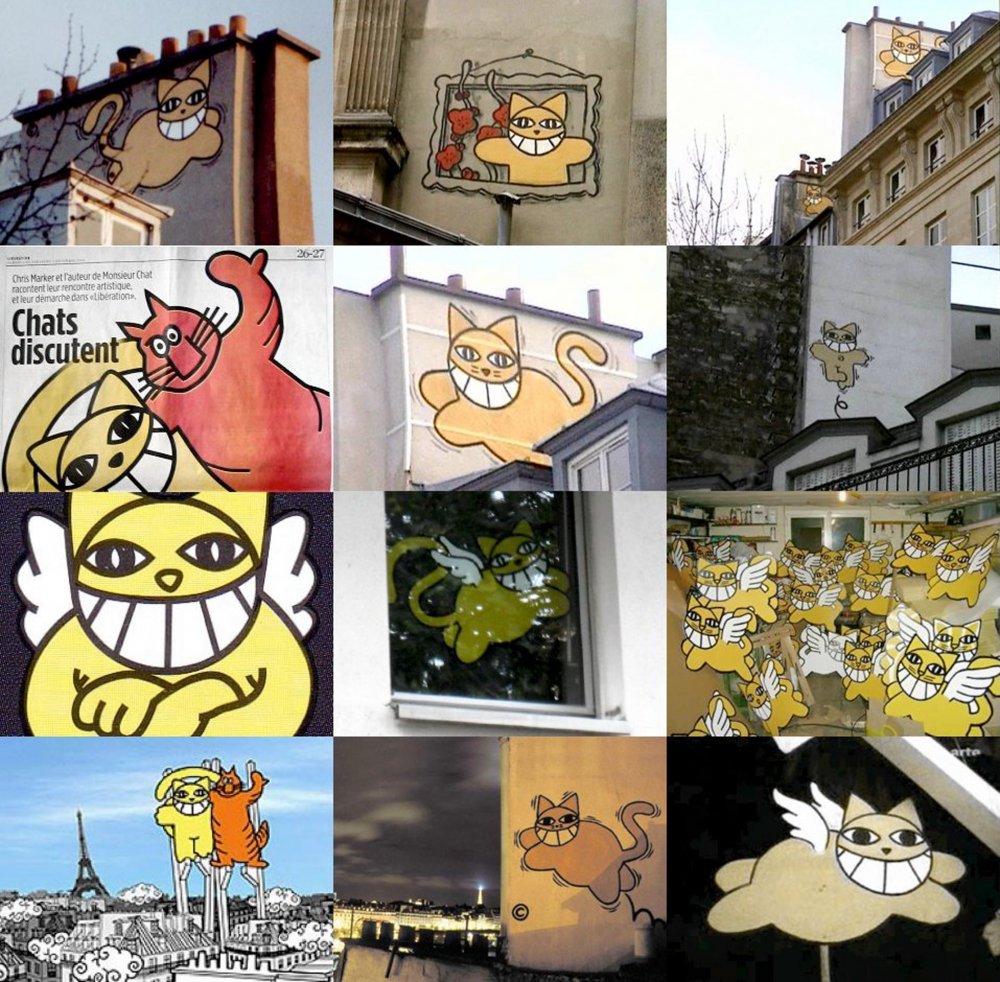
Graffiti cat tributes to Chris Marker
For a few brief hours after news of Chris Marker’s death on 29 July (his 91st birthday) began filtering around the world, he trended on Twitter second only to the Olympics. It seemed both apt and astonishing that Marker, notoriously so elusive and for many decades one of cinema’s best-kept insider secrets, should have touched the popular heart of this most frivolous and incisive of social-media platforms. For at the core of Marker’s gift as a pioneering multimedia artist, cinematic essayist and relentlessly elegant navigator of the deep structures of memory was his ability to fuse light-hearted enchantment with political acuity, honouring the need for both as indispensable responses to the swift shape-shifting of the modern world.
The exhibition Chris Marker: a Grin Without a Cat runs until 22 June at the Whitechapel Art Gallery, London. The accompanying film programme Chris Marker: Memories of a Film Pioneer runs until 13 May at the Barbican and until 4 June at the Ciné Lumière, London.
Chris Marker as we know him first emerged as a writer and cultural commentator in late-1940s Paris. He wrote on a variety of topics for journals like Esprit and Cahiers du cinéma, and published longer works including a novel, The Forthright Spirit (Le Coeur net, 1949). Marker’s first steps as a filmmaker came in the early 1950s: an educational film about the 1952 Helsinki Olympics and Statues Also Die (Les statues meurent aussi, 1953), a powerful and poetic indictment of the consequences of European imperialism in Africa, co-directed with Alain Resnais – and banned by the French government.
With Resnais and Agnès Varda, Marker became identified in the later 1950s with the so-called Left Bank group of the French New Wave, distinguished from the critics-turned-filmmakers of Cahiers du cinéma by sharper allegiances to literature, art, photography and documentary. Marker’s early reputation as a film essayist was sealed in this period by a run of engaging, perceptive personal travelogues: Sunday in Peking (Dimanche à Pékin, 1956), Coréennes (1957 – which just happens to be a book), Letter from Siberia (Lettre de Sibérie, 1957), Description of a Struggle (Description d’un combat, 1960) and Cuba Sí! (1961), which tapped the complex identities of nations in rapid and bewildering transition to new roles in the Cold War world.
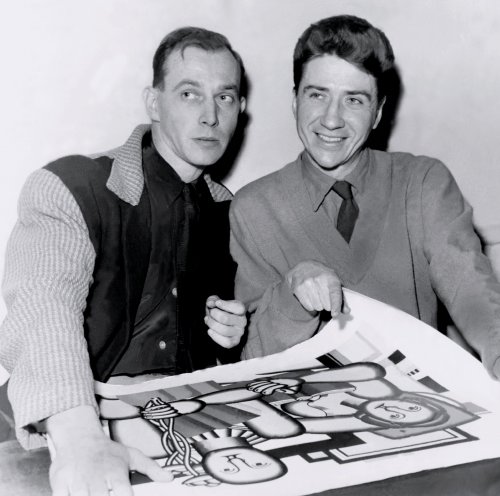
Chris Marker with Alain Resnais
His reputation established, Marker confounded it. For Le joli mai (1962) he augmented personal commentary with the interactive engagement of cinéma vérité, conducting interviews with a cross-section of Parisians to gauge the state of his home nation in the aftermath of the Algerian War. Except that Marker preferred “ciné, ma vérité” (“cinema, my truth”), holding subjective perception in lively tension with the quasi-scientific objectivity that cinéma vérité was often assumed to promise. From the shadows of Le joli mai came Marker’s best-known and most widely seen film, the inimitable science-fiction classic La Jetée (1962). This piercing story of loss, memory and infatuation is composed almost entirely of still images, and in a mere 29 minutes strips the elaborate mechanics of the narrative fiction film down to their bare bones.
The mid-1960s saw Marker briefly return to the personal travelogue for The Koumiko Mystery (Le Mystère Koumiko, 1965), the first of his many fascinated encounters with Japan, and further explore the terrain of the photo-film in If I Had Four Camels (Si j’avais quatre dromadaires, 1966).
Then in 1967 the decade’s social and political ferment propelled his work in a new direction. Beginning with his involvement in the collective anti-Vietnam War protest film Far from Vietnam (Loin du Viêt-nam, 1967), Marker immersed himself in radical political and countercultural filmmaking, ceasing to sign his work and instead operating within the collectives SLON and ISKRA to report on the course of liberation struggles in France, Latin America, Eastern Europe and elsewhere. Key films from this period include The Battle of the Ten Million (La Bataille des dix millions, 1970) – a reportage on Cuba’s push for a mammoth sugar harvest – and Embassy (1973), a haunting super-8 reimagining-with-a-twist of the fate of Chilean political activists who sought refuge in foreign embassies following the US-backed military coup.
In 1977, Marker released Le fond de l’air est rouge (later known as A Grin Without a Cat), a sweeping, magisterial reflection in montage on the rise and fall of 1960s radicalism at key touch points around the world. Guided by a hunch that, seen with hindsight, the outtakes of militant films might hold clues to the unconscious dynamics of the history they’d been recording, Marker conjured with a breathtaking array of footage and a multi-voice commentary to convey this history as a tangle of competing perspectives, glaring contradictions and messily unfinished business.
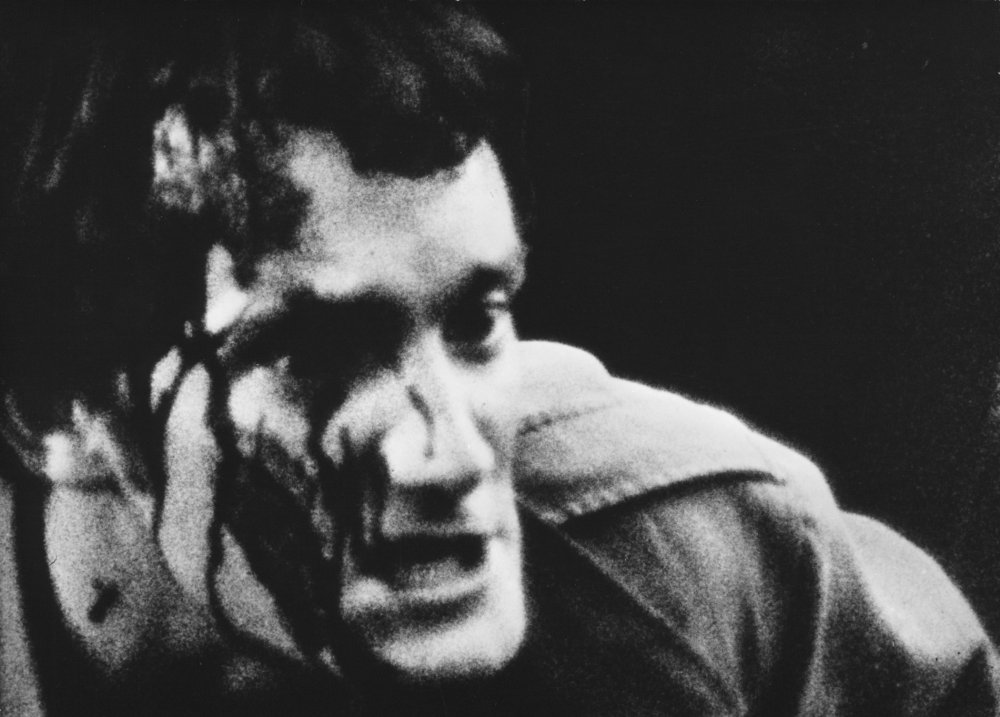
Grin Without a Cat (1997)
The reappearance of Marker’s name in the credits of A Grin Without a Cat – and the film’s few but telling feline asides – heralded his decisive return to personal filmmaking in Sans soleil (Sunless, 1982), a landmark of the cinematic essay, and with La Jetée the film for which Marker is best known. In Sans soleil an unseen woman reads and comments upon letters she receives from a globetrotting cameraman, Sandor Krasna, who journeys obsessively to Japan, West Africa, Iceland, the Ile de France and the San Francisco locations of Vertigo. Ostensibly in search only of banality, the persona of Krasna fuses Marker the essayist and Marker the militant filmmaker to offer a breathtakingly virtuoso meditation on time, place, memory, history and the act of representation.
Sans soleil’s allusive, fugue-like form and interludes of video synthesiser-treated imagery anticipated Marker’s gleeful embrace of new digital media technologies from the 1980s onwards. He happily diversified into producing video works for television – the most substantial of which include The Last Bolshevik (Le Tombeau d’Alexandre, 1993), a portrait of the Soviet director Alexander Medvedkin, and The Owl’s Legacy (L’Héritage de la chouette, 1988), a 13-part series on the significance of Ancient Greek civilisation in the modern world. He also created gallery-based multimedia installations such as Zapping Zone (1990), Silent Movie (1995) and Owls at Noon (2004). His fascination with digital hypermedia as the ideal vehicle for exploring memory found shape in the network-inspired documentary/fiction film Level Five (1996), before culminating in the interactive CD-Rom Immemory (1997).
Marker’s longstanding activity as a photographer recently found new prominence with the book and exhibition Staring Back (2007) and the 2011 exhibition Passengers. Meanwhile he continued to chip in to the frontiers of Web 2.0, issuing his regular collage/cartoon Poptronics blog from 2007 until 2010, appearing in the online virtual world Second Life in the guise of his beloved cat Guillaume-en-Egypte, and releasing online in 2006 a humble cat-and-mouse home video, Leila Attacks!, which intuited to perfection the coming era of virals.
It’s too early to anticipate Chris Marker’s legacy to the future. Yet much as Marker himself kept reworking A Grin Without a Cat – because he needed to ask what it still meant to later generations who’d watched the Berlin Wall fall and the tanks roll over Tiananmen Square – I can’t resist wondering if and what his work whispers now to the generation of Occupy, to Gaza and Syntagma Square, to those facing the realities of climate change and ecocide – and asking whether there will be a future to leave any kind of legacy to.
Nine filmmakers on Chris Marker
John Gianvito
US, Profit Motive and the Whispering Wind
Whether he’s consciously an influence or not, anyone who’s ventured into that loosely defined terrain of the ‘essay documentary’ anytime within the past 55 years owes a debt to Chris Marker. As pivotal as the impact that Dziga Vertov had on Marker himself (“the only teacher,” Marker called him just a year ago), an axial connection to Marker can be discerned amidst the diverse trajectories of filmmakers like Patrick Keiller, Jean-Pierre Gorin, Adam Curtis, Lynne Sachs, Soon-Mi Yoo, Michael Shamberg, Patricio Guzmán and Marc Karlin – a filmmaker I discovered through Marker who’s in need of the kind of reclamation Marker afforded the Soviet filmmaker Alexander Medvedkin [in films such as The Last Bolshevik].
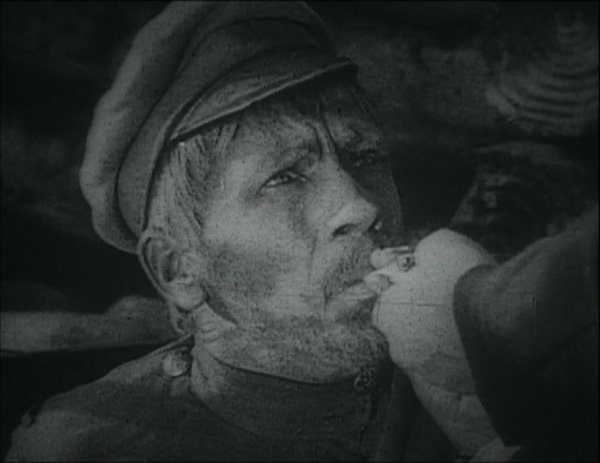
The Last Bolshevik (1992)
But how to define those attributes that made Marker so special? Attempting the impossible, here’s my shortlist: attentiveness to details (of images, behaviour, historical records); formidable erudition guided by boundless curiosity; modesty; compassion; a fierce work ethic while maintaining a sense of play; the avoidance of cynicism; mental agility; craftsmanship; poetic imagination. It seems to me that it was this concoction that enabled Marker – the perennial space and time traveller – to so productively roam, question and synthesise such a vast array of human experience.
While I chafed in his later years at what I felt was Marker’s naive and uncritical embrace of Obama, as well as his sojourns in the online labyrinth of Second Life, I remain deeply moved by Marker’s investment in history and memory as sites of necessary contestation. By striving to be a global citizen, Marker – through his films, writings, photos – always managed to remind me of the myriad ways we are all connected (and not only to humans), and thus implicated in that predicament. That he did this largely without judgement and with frequent cheerfulness only adds to the mystique.
Jem Cohen
US, Museum Hours, Chain
When I first saw Forough Farrokhzad’s astonishing (and only) film The House Is Black (1962) some time in the 1990s, I was hungry to share it with others, but at the time it was unavailable and seemed to me utterly mysterious. How could I never have even heard of this most singular work – a key missing monument in the unmapped lands of the lyrical essay film? Much later when I saw the DVD had come out, there on the back was a blurb from Marker and inside, his excellent comments. It turned out he’d championed her work for years, and had even known her. (Farrokhzad died in a car accident in 1967, at the age of 32).
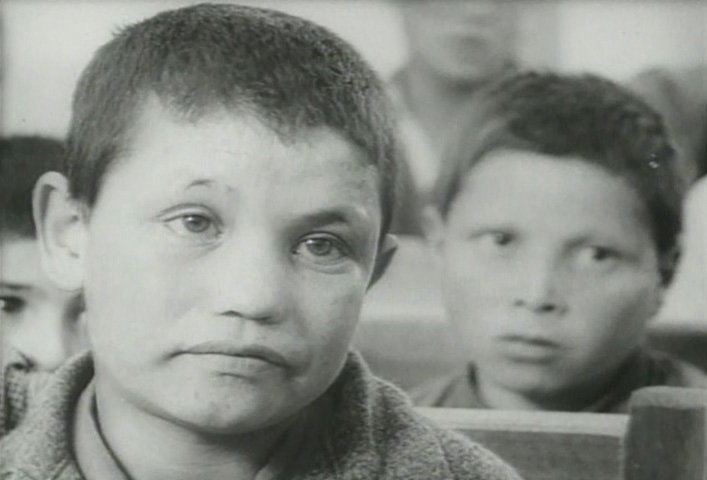
Forugh Farrokhzad's The House is Black (1963)
Marker turned up in so many crucial places – and so far in advance – that it could seem uncanny, almost impossible: shooting [Cuba Sí!] in Cuba just before the Bay of Pigs; arranging the first publication of William Klein’s seminal book of New York street photos in 1956; smuggling filmstock to Patricio Guzmán in Chile just before the 1973 military coup; filming the anti-war demonstrations at the Pentagon in 1967; working with Bosnian refugees at their pirate TV studio in Slovenia in the early 1990s… On and on he seemed somehow always there, eventually if not in person then in spirit – witness the wonderful Zen cat symbol he recently made for Occupy Wall Street.
On 29 July, honouring his 91st birthday (and unbeknown to myself and the world, the actual day of his death), I showed The House Is Black to students. Farrokhzad’s phrase “the owl in the ruins” jumped out at me and I suddenly flashed: “That’s him. That’s Marker. He’s the owl in the ruins.” That’s how I think of him, perched above the wreckage of the 20th century (and alas, the 21st), carefully measuring its devastations and its beauties, flying so quietly from tree to lamppost to bombed-out steeple to Japanese TV aerial, sharp eyes to the ground.
I note the animal and not the man in part because Marker was notoriously private. It’s true that he resisted presenting his films in person, almost never gave interviews, and didn’t wish his photograph to be taken.
But was he really so reclusive? Hardly. We live in an age so obsessed with celebrity that we can barely imagine a person not wanting or needing to be seen – a time where the ascendance of social media (please don’t call it a ‘revolution’) is too often just another way of saying that we’re all supposed to be full-time self-publicists now, jockeying for position and ‘likes’ on Facebook.
My guess is that Marker pushed fame away long ago in part because he just had more important work to do. He was incredibly busy, right up to the end, always trying to finish another film, to master a new technology, to rush out a fresh cartoon about current events. (Those cartoons were sometimes how I first heard about breaking news – even events in my own country!)
Marker was, to so many, a living legend, yet I fear we discredit him if we place him high and solitary on any kind of pedestal. The Chris Marker who most moved me was not the mysterious genius (though I just can’t deny there was some of that there) – it was the man who made do. Marker was a DIY renegade. His ability to make something powerful, multivalent, funny and timeless out of next to nothing gave the lie to the notion that ‘real’ filmmaking is the stuff of studios, big money, armies of technicians, focus groups, ‘The Industry’. In other words, he – like Vertov and Vigo and Varda (and Ivens and Alvarez and many others) – brought filmmaking within reach.
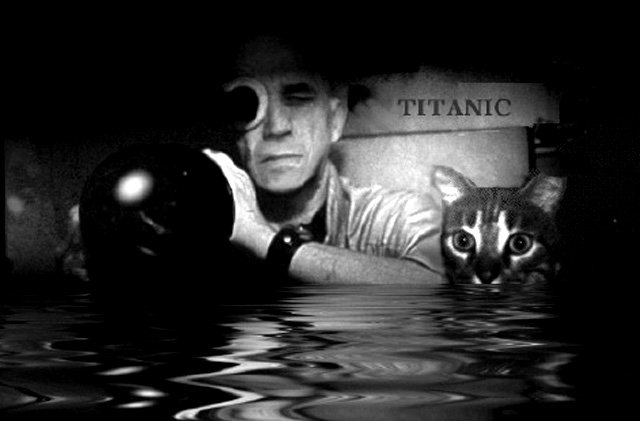
Chris Marker photographed by Wim Wenders
He was his own industry, but it was an industry interlaced with comrades and co-workers. It wasn’t that he disdained or rejected the other, more luxurious world of cinema (he loved many big movies and much American cable television). It was just that he drew from and carved out an entirely different lineage, coexistent but often stupidly marginalised, where all one needed was an eye, a camera, a recorder, some ideas – and the world. (But what an eye, and what ideas!)
For such a master, his tech was occasionally crude – or, more appropriately, it felt handmade, about which he wasn’t precious or apologetic. He cobbled things together and produced an astonishing amount (not only films but writing, stills, installations and the CD-Rom Immemory), always moving on to the next project rather than promoting the last. But make no mistake, Marker surely struggled to make his work and to make a living in a world that mostly did not share his guts or his values. We must not forget that he was a radical, in the finest, most hopeful sense of the word, and radicals don’t have it easy here.
Marker knew that documentary filmmaking meant enquiry, free association and an awareness of all the other arts – books, music, painting and so on, out of which it breathed and reverberated. He also had great faith in new technology. He relished the internet, though not uncritically. I sometimes have the uncanny feeling – when the internet’s at its best – that he must have invented it, this invisible labyrinth and library of endless possibilities.
His open-mindedness is a great lesson to me. Where I was at first troubled by the virtual rabbit-hole of Second Life, he saw the potential for a movie theatre there, showing works that nobody else would distribute.
When I first encountered Marker in Paris, he indicated that we’d meet in the lobby of my hotel – and it didn’t occur to me to say that I wasn’t sure what he looked like. (Less of him had leaked onto the web back then.) I waited nervously in my room upstairs and then, glancing out of the window, saw a man crossing the street and knew immediately it was him. He moved with the ranging wariness that marks a lifelong street photographer – lean and loping, and somehow wild. He had a beautiful, strong face.
It wasn’t exactly easy to meet someone whose work I cared so deeply about, but he proved kind, funny and humble. Beyond fascinating, yes, but not a legend to be feared. He was already around 80 but uncannily ageless. For someone so steeped in the day’s news, so keenly on top of practically every blessed and bedevilled global eruption of resistance against tyranny, he did seem outside of time. And now he really is. I miss his concrete presence – the massive inspiration in just knowing he was out there on this broken planet, watching and working.
Thom Andersen
US, Los Angeles Plays Itself
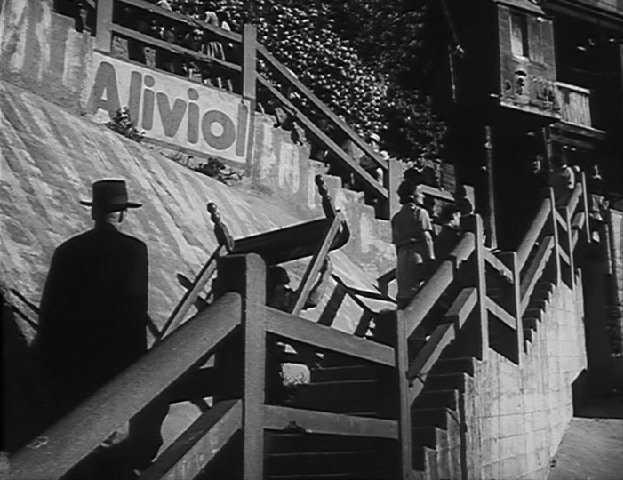
Valparaiso (1965)
Once, long ago – I can’t remember where or when – I had the good fortune to see A Valparaiso (1963), directed by Joris Ivens with a text by Chris Marker. It is still the best city film I’ve seen, and it has one line (about Valparaiso) I will always remember: “Its lie is the sun, its truth is the sea.” That line was something to which I could aspire.
A good original epigram is a rare thing in movies. There are some in Godard’s movies, but they are just emblems of thought. He doesn’t care about their truth value. But Marker’s epigrams are always convincing as well as unexpected.
I only had that one chance to see A Valparaiso projected. I’ve never had a chance to see most of his films, and others only many years after their original release. The political censorship we face in the United States has allowed only his more melancholy films, such as Sans soleil, to pass, while stopping his optimistic films, such as Sunday in Peking, If I Had Four Camels and Cuba Sí!. Others were delayed until their usefulness had vanished.
I read a review of Le fond de l’air est rouge in Variety in 1977; I first saw it in 2002, when it was finally released in the US with a new title, A Grin Without a Cat, that reversed the connotations of the original. The grin is the armed revolutionary vanguard, and the cat is the people. The disillusioned leftist has for many years been a sympathetic figure in American culture. Marker, of course, didn’t choose this role – it was falsely imposed on him in the US by selective sampling of his work.
So I can’t write about his work; I can only quote a few images and phrases. Here is one that doesn’t come from a film, but from a 2003 interview in Libération: “The exponential growth of stupidity and vulgarity [in television] is a concrete, quantifiable fact… and a crime against humanity.”
Chris Petit
UK, Radio On, Content
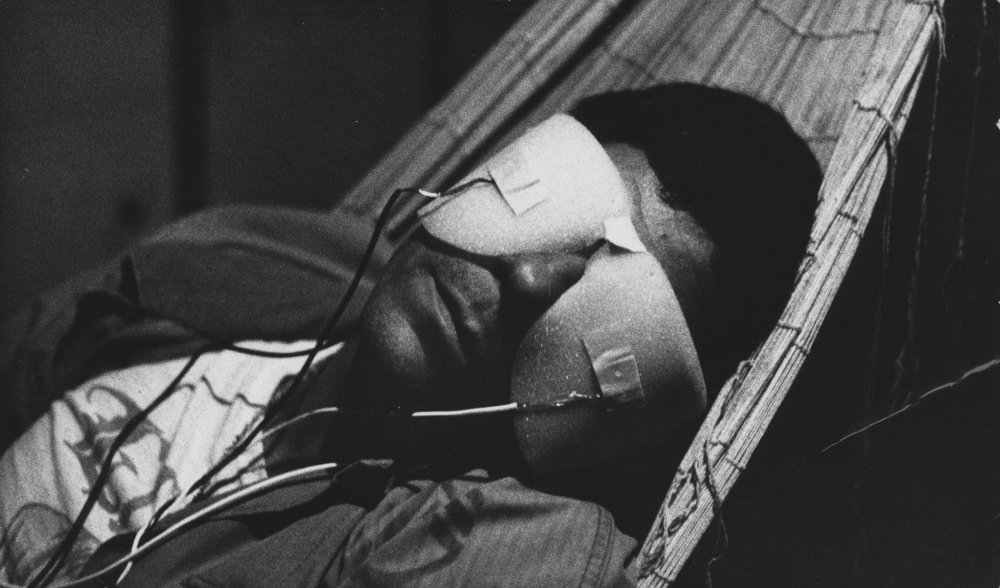
La Jetée (1962)
I saw La Jetée at the school film society in about 1965. It was one of those school film-society staples in the way Incident at Owl Creek was, and I remember being far more impressed by the Marker simply because of the radical thing of not using film and the moment of the blink, which was like the birth of cinema. I thought he made Orly airport look very cool. It’s a very cool film.
He wasn’t much around in the 1970s when I was a film critic at Time Out and it wouldn’t have been until I saw Sans soleil at the Berlin Film Festival in 1982 that he came back into the frame for me. I couldn’t recollect having seen anything like it; its obvious attraction was of this completely dismantled form of cinema, in that it was pretty much somebody making films by themselves. I do remember thinking, “My God, what you can do when you split the sound and image” – the freedom to make the film into whatever you wanted.
I may have been at Berlin with [Petit’s 1981 feature] An Unsuitable Job for a Woman, which had been a fairly horrendous experience in that it was bog-standard English film production, and the epiphany on watching Sans soleil was that there were preferable ways of making films.
Yet there was no example that I could think of working like that in the UK. The question was: would I rather make a film like that in terms of how it’s made, or would I rather make a standard production? And the answer was pretty obvious. And when it came to making The Falconer [directed by Petit and Iain Sinclair, 1997], Marker’s example of splitting sound and picture and not having to rely on synch sound was a pretty major realisation.
As a writer you often write to discover what it is you’re writing about, so there’s a process of discovery. Whereas filmmaking is in essence much more premeditated. I think Marker’s films were close to writing in that he made them presumably in conditions of more or less total artistic freedom and he wasn’t beholden to anyone. The thing I always found depressing about conventional filmmaking was that it became about assembly and essentially all the decisions were made in advance. With Marker’s films there was the feeling of a sense of discovery in the making of them.
I never met him, but my Time Out colleague Chris Peachment did. They were in Japan together when Marker was making A.K. (1985), his film about Kurosawa’s Ran. He’s got a picture of Marker taken out of a bus window on a foggy day. It must be one of the few!
Marker always demonstrated how little you actually needed in order to be a real filmmaker. As a figure he does stand way ahead of the technological revolution we’re going through now. If you’re starting out as a student filmmaker now you’ve got the camera, you’ve got the cutting equipment on a computer, so I suppose as a fairly unique essayist – a horrible word! – Marker is an obvious person to look to. In that respect, he was the first.
You could argue that he was the most original of the New Wave, and he didn’t seem to want the cover of Paris Match in the way that Godard did! Godard and Chabrol and Truffaut were all excellent self-publicists. Marker struck me as more of a cosmonaut than the rest of the New Wave in the way he turned filmmaking into a strange combination of the collective and the solitary.
Sarah Turner
UK, Perestroika
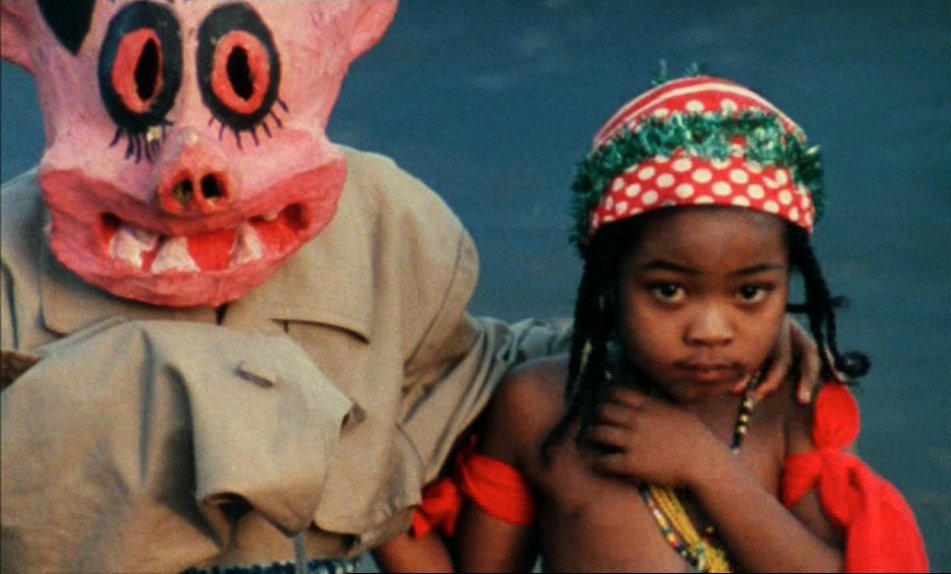
Sans Soleil (1983)
The first Marker film I saw was La Jetée when I was an art student at Central Saint Martins in the 1980s. La Jetée is hugely experimental because it denies the basic modality of film. The essence of film is the moving image, and for me La Jetée works within the paradigm of experimental film because it counters certain fundamental conventions. What would it mean for the moving image to demand that we reflect on a moment and imagine around it? I think this is one of Chris Marker’s legacies.
I also saw Sans soleil in the 1980s and I don’t think I had the resources to understand it as a much younger artist. Back then I’m sure I was resistant to all the beautiful women staring into the lens! It’s only when I’ve re-viewed it recently that I felt differently. Now I can better understand the value of what he was doing. He’s an essayist with a very particular, very intellectual agenda. One of the things he’s very good on is how we can’t separate social experience from history. With the benefit of hindsight I see his analysis as hugely valuable.
His work is always about how the past is constructed through images, which are in themselves constructions, and that’s the great gift he’s given us – his analysis of the image archive and who ‘frames’ the stories within it. For me, this was extremely prescient, especially in Letter from Siberia, where he looks at how any narrative is also the experience of how it’s ‘framed’.
I revisited Letter from Siberia when I was making Perestroika (2010). I was interested in the contemporary experience of amnesia and how, as someone born in the 1960s, my experience of the Soviet Union was as a form of political otherness – and a valuable form of otherness, depending on your political position. What happened post-1989 was the entire experience of political otherness basically collapsed in the Western world.
The other thing I focused on in Letter from Siberia was the epistolary structure. It was much more than a literary game, and I felt that my duty to Chris Marker was to put that into another language – that of a psychic game.
He’s a hugely important figure of Left consciousness. The other thing I value was that he was an ‘anti-celebrity’. He constantly refused all of that, which makes him an extremely valuable mentor in our culture.
Kodwo Eshun
UK, Otolith I, II & III, The Radiant
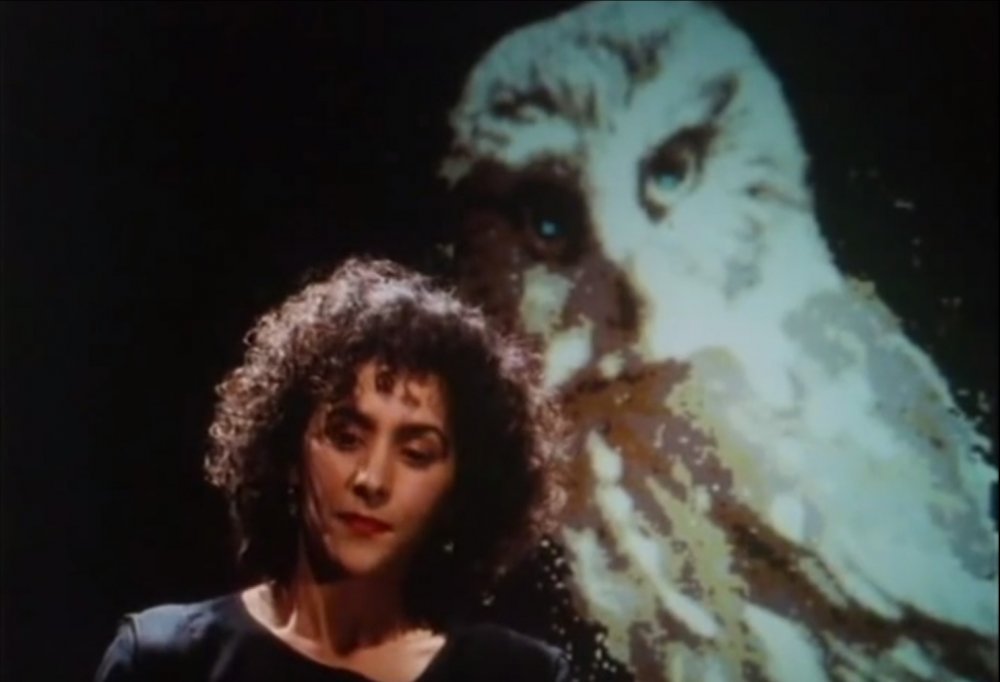
The Owl's-Legacy (1983)
In the relentless heat of June 2007, The Otolith Group [Eshun and Anjalika Sagar] conceived an idea to represent a 13-episode television series neither of us had ever seen in the form of a 13-monitor installation. The series was The Owl’s Legacy, directed by Chris Marker, filmed in Tblisi, Athens, Paris, Berkeley and Tokyo, with appearances from Iannis Xenakis, Michel Serres, Cornelius Castoriadis and others, screened on the Franco-German TV network Arte in 1989 and on Channel 4 in 1991 (where it was voiced by Bob Peck). The context was ‘Destroy Athens’, the 1st Athens Biennale.
We sent an email proposal to Marker; he replied, two days later: “I am glad to hear you’re interested in The Owl, but you do know it is banned in Greece, don’t you?” Marker explained that the Onassis Foundation – one of Greece’s most important cultural foundations, and one of the two main funders of The Owl’s Legacy – had taken offence at George Steiner’s statement that ancient Greece was nothing to do with modern Greece; that modern Greece was a farce and a joke. The foundation had demanded an apology. Marker gave them space to respond to Steiner, but the foundation were not content with this. They consistently refuse to grant Arte permission for a DVD reissue of the series.
The Owl’s Legacy is now widely available on gorgomancy.net and on Vimeo; back in 2007 it was a disappeared project. Now that Marker has gone, what remains is his determination to fight the foundation’s censorship. When Marker sent us DVDs of The Owl’s Legacy with his own hand-printed sleeves, he was bootlegging his own work, using the context of the Athens Biennale to fight the attitude of the Onassis Foundation. Because we agreed not to ask the foundation’s permission to screen the series, or pay them, they could legally have closed down the installation and arrested us and the curators. Or they could ignore the entire event, which they in fact did.
Now that Marker has gone, what remains are details: the way he tested and encouraged us; his painstaking emails; his anger when we asked whether we could publish his emails; his pleasure that his work had been “brought back from Hades”; his refusal to allow the foundation’s behaviour to overshadow his great, unseen work in the present, for the future.
Patrick Keiller
UK, London, Robinson in Space
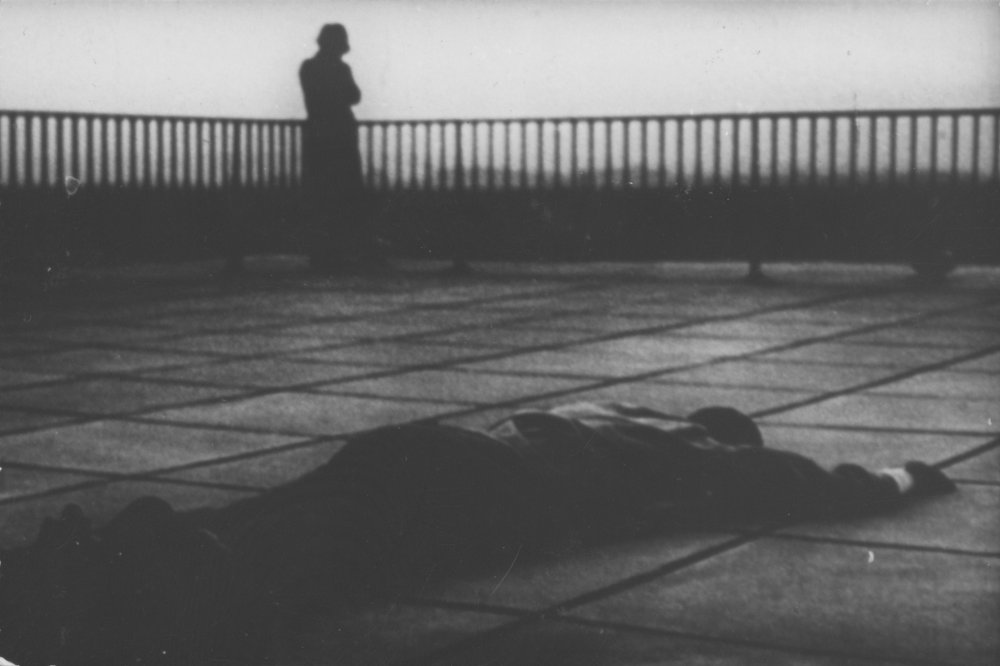
La Jetée (1962)
I first saw La Jetée during the winter of 1968-9, I think at the Arts Lab in Drury Lane. Wherever it was, it wasn’t in a cinema, and I may not have gone there to see a film; it was in a late-night programme in which the films weren’t individually listed, so that it came as a complete surprise.
I saw it a few more times in similar circumstances in the months that followed, and although it never occurred to me to make anything like a film until about ten years later, La Jetée was one of a few films – L’Atalante was another – that I thought of very often. When I did attempt some architectural cinematography, it was La Jetée that encouraged me to think it might be possible to make something with the results.
One evening in July 1989 I went to see Le joli mai at the London Film-Makers’ Co-op. Marker’s film is a record of a ‘moment’ in Paris – a first month of peace after the end of the Algerian War. I wondered whether London might be about to experience a comparable ‘moment’ and, if so, whether this might enhance the possibility of making a film about the city, a subject I had until then considered too difficult.
As it turned out, we didn’t photograph London until 1992 [when Keiller shot his film London], but that year, too, proved to be a ‘moment’ in the city’s history.
José Luis Guerín
Spain, In the City of Sylvia
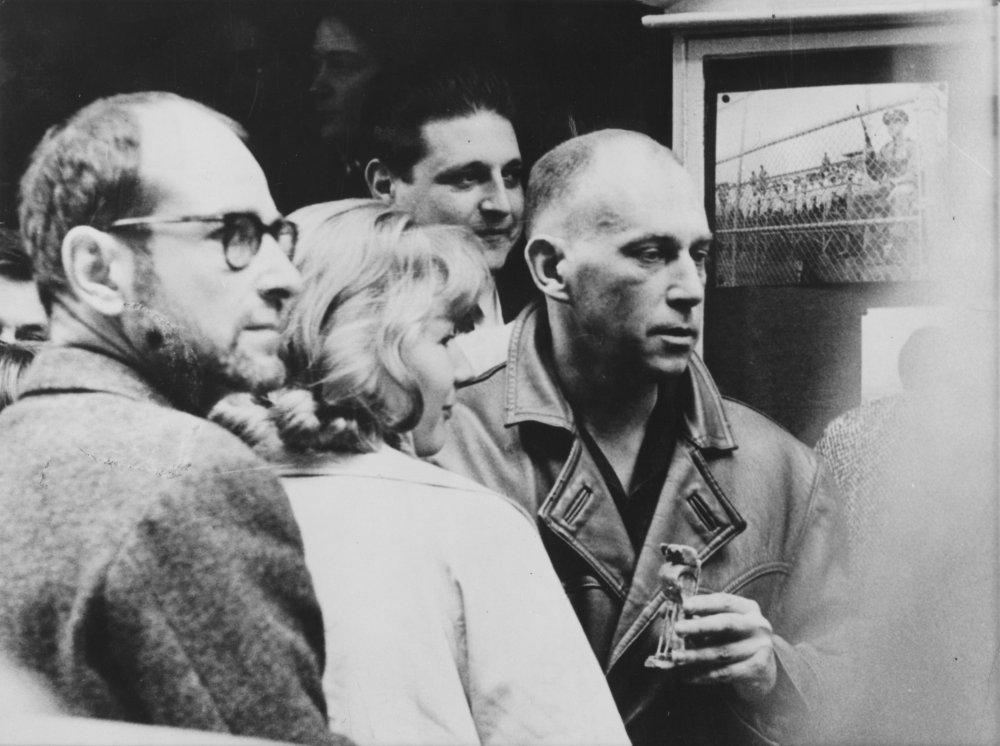
Chris Marker
If the fiction feature film has its equivalent in the 19th-century novel, where are the equivalents of travel books, memoirs, archives, biographies, essays, poetry, epistles, activism…? Chris Marker, more than any other filmmaker, has broadened the horizons of his own medium.
That is how I used to present him to my students in the years when I made a living from teaching in the 1980s and the 90s. I used The Train Rolls On (Le Train en marche, 1971, about the Soviet director Alexander Medvedkin), one of those films that Marker later distanced himself from ideologically, to the point of hindering its visibility – but in which I thought I could discern the near-culmination of his art.
It’s been years since I last watched it, but I still remember by heart almost the whole of the voiceover commentary – the tone and the tempo of that voice, the astuteness of the pauses – and the emotion of discovering a new form of beauty, a new inventory in the confrontation between word and image, a new way of producing ideas.
This discovery at the beginning of the 1980s determined my desire for those forms of cinema that laziness confines to the term ‘documentary’, and which in my mind simply corresponded with ‘free cinema’. Back then it was difficult to find interlocutors in my country with whom to share this revelation. But surprisingly – without having been exhibited, and thus having been effectively silenced by the mass media – Marker slowly started to become established as one of the central and most referenced figures for the young cinema.
His was an incorruptible poetics that would mutate into every possible format, from 35mm to domestic video, and at all lengths, from a four-hour-long fresco to a haiku of three minutes; that could develop under the sign of activism or science fiction; that could adopt the shape of a film, or of some photographs, or of a book or an installation… This versatile filmmaker without a face was able to circumnavigate those industry demands that often seemed insurmountable; he has slowly become the filmmaker most in tune with these new times, with the new uncertainties.
When it feels as if there’s nothing left to do in cinema, Chris Marker turns up and shows us that everything is possible, even making a film with still photographs or in super 8 – or even not making it, but instigating it: Guzmán’s The Battle of Chile, Ivens’s A Valparaiso, Far from Vietnam, Ciné Tracts, Cuban documentary in the 1960s… Chris Marker has seen it all.
Agnès Varda
France, Cleo from 5 to 7, The Beaches of Agnès
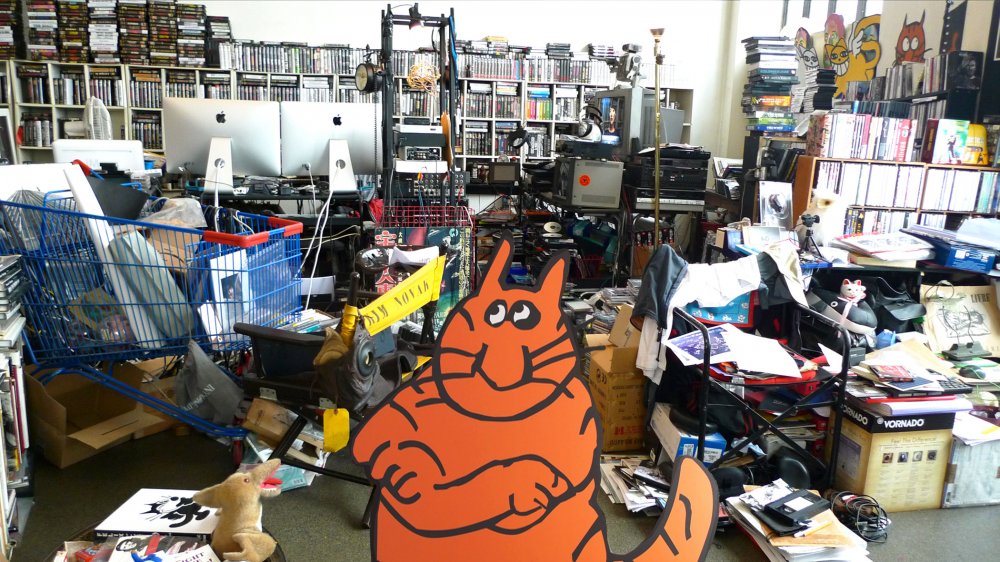
Chris Marker's office, photographed by Agnès Varda
He first entered my life in 1954, as a voice. He used to telephone Resnais, who was editing my first film.
His intelligence, toughness and tenderness have been one of my joys throughout our long friendship.
All his friends had access to a little of him. He’d send them drawings and collages. But probably only he could reassemble all the pieces of his auto-puzzle. He’s going, knowing he was admired and much loved.
I used to enjoy meeting him, but in my film of him in his atelier, his creative lair [part of her 2011 TV series Agnès de ci de là Varda], he is heard but not seen.
He chose long ago to make himself known by his work and not by his face or through his personal life. He chose the drawing he made of his cat Guillaume-en-Egypte to represent him. He also chose – for a while at least – to appear in Second Life in the guise of a big, pale guy, an avatar who wandered around an island and chatted with an owl.
Interviews / translations by Chris Darke and Mar Diestro-Dópido.
-
Sight & Sound: the October 2012 issue
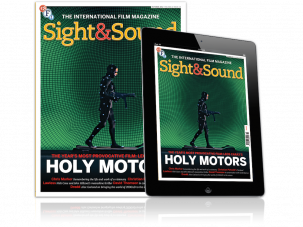
Holy Motors, Dredd, Lawless, Barbara, Chris Marker, David Thomson, Greil Marcus, Paul Fejos, Mary Pickford and the FBI.
-
The Digital Edition and Archive quick link
Log in here to your digital edition and archive subscription, take a look at the packages on offer and buy a subscription.




